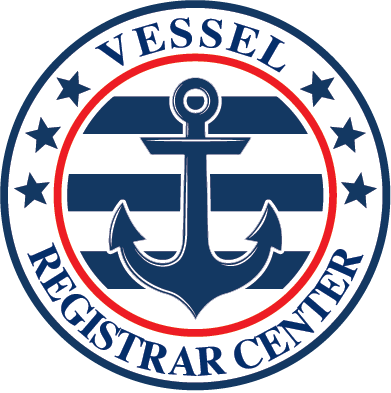183.31 Applicability.
This subpart applies to monohull boats less than 20 feet in length except sailboats, canoes, kayaks, and inflatable boats.
183.33 Maximum weight capacity: Inboard and inboard-outdrive boats.
- The maximum weight capacity (W) marked on a boat that has one or more inboard or inboard-outdrive units for propulsion must not exceed the greater value of W obtained from either of the following formulas:
- For the purposes of paragraph (a) of this section:
- “Maximum displacement” is the weight of the volume of water displaced by the boat at its maximum level immersion in calm water without water coming aboard. For the purpose of this paragraph, a boat is level when it is transversely level and when either of the two following conditions are met:
- The forward point where the sheer intersects the vertical centerline plane and the aft point where the sheer intersects the upper boundary of the transom (stern) are equidistant above the water surface or are equidistant below the water surface.
- The most forward point of the boat is level with or above the lowest point of water ingress.
- “Boat weight” is the combination of:
- Hull weight;
- Deck and superstructure weight;
- Weight of permanent appurtenances; and
- Weight of full permanent fuel tanks.
- “Machinery weight” is the combined weight of installed engines or motors, control equipment, drive units, and batteries.
- “Maximum displacement” is the weight of the volume of water displaced by the boat at its maximum level immersion in calm water without water coming aboard. For the purpose of this paragraph, a boat is level when it is transversely level and when either of the two following conditions are met:

[CGD 72-61R, 37 FR 15782, Aug. 4, 1972]
Editorial Note:
For Federal Register citations affecting § 183.33, see the List of CFR Sections Affected, which appears in the Finding Aids section of the printed volume and at www.govinfo.gov.
183.35 Maximum weight capacity: Outboard boats.
- The maximum weight capacity marked on a boat that is designed or intended to use one or more outboard motors for propulsion must be a number that does not exceed one-fifth of the difference between its maximum displacement and boat weight.
- For the purposes of paragraph (a) of this section:
- “Maximum displacement” is the weight of the volume of water displaced by the boat at its maximum level immersion in calm water without water coming aboard except for water coming through one opening in the motor well with its greatest dimension not over 3 inches for outboard motor controls or fuel lines. For the purpose of this paragraph, a boat is level when it is transversely level and when either of the two following conditions are met:
- The forward point where the sheer intersects the vertical centerline plane and the aft point where the sheer intersects the upper boundary of the transom (stern) are equidistant above the water surface or are equidistant below the water surface.
- The most forward point of the boat is level with or above the lowest point of water ingress.
- “Boat weight” is the combination of:
- Hull weight;
- Deck and superstructure weight;
- Weight of permanent appurtenances; and
- Weight of full permanent fuel tanks.
- “Maximum displacement” is the weight of the volume of water displaced by the boat at its maximum level immersion in calm water without water coming aboard except for water coming through one opening in the motor well with its greatest dimension not over 3 inches for outboard motor controls or fuel lines. For the purpose of this paragraph, a boat is level when it is transversely level and when either of the two following conditions are met:
[CGD 72-61, 37 FR 15782, Aug. 4, 1972, as amended by CGD 73-250, 40 FR 43857, Sept. 23, 1975; CGD 75-176, 42 FR 2681, Jan. 13, 1977; USCG-1999-5832, 64 FR 34716, June 29, 1999]
183.37 Maximum weight capacity: Boats rated for manual propulsion and boats rated for outboard motors of 2 horsepower or less.
- The maximum weight capacity marked on a boat that is rated for manual propulsion or for motors of 2 horsepower or less must not exceed 3/10 of the difference between the boat’s maximum displacement and the boat’s weight in pounds.
- For the purposes of paragraph (a) of this section:
- “Maximum displacement” is the weight of the volume of water displaced by the boat at its maximum level immersion in calm water without water coming aboard. For the purpose of this paragraph, a boat is level when it is transversely level and when either of the two following conditions are met:
- The forward point where the sheer intersects the vertical centerline plane and the aft point where the sheer intersects the upper boundary of the transom (stern) are equidistant above the water surface or are equidistant below the water surface.
- The most forward point of the boat is level with or above the lowest point of water ingress.
- “Boat weight” is the combination of:
- Hull weight;
- Deck and superstructure weight; and
- Weight of permanent appurtenances.
- “Maximum displacement” is the weight of the volume of water displaced by the boat at its maximum level immersion in calm water without water coming aboard. For the purpose of this paragraph, a boat is level when it is transversely level and when either of the two following conditions are met:
[CGD 72-61R, 37 FR 15782, Aug. 4, 1972]
Editorial Note:
For Federal Register citations affecting § 183.37, see the List of CFR Sections Affected, which appears in the Finding Aids section of the printed volume and at www.govinfo.gov.
183.39 Persons capacity: Inboard and inboard-outdrive boats.
- The persons capacity in pounds marked on a boat that is designed to use one or more inboard engines or inboard-outdrive units for propulsion must not exceed the lesser of:
- The maximum weight capacity determined under § 183.33 for the boat; or
- For boats with a maximum persons capacity less than 550 pounds, the maximum persons capacity determined in the following manner:
- Float the boat in calm water with all its permanent appurtenances, including installed engines, full fuel system and tanks, control equipment, drive units and batteries.
- Gradually add weights along one outboard extremity of each passenger carrying area, at the height of the seat nearest the center of that area, but no higher than the height of the gunwale and distributed equally forward and aft of that center in a plane parallel to the floorboards, until the boat assumes the maximum list or trim or both, without water coming aboard.
- Compute the persons capacity in pounds in the following formula: Persons capacity = A/0.6 where A is the total of the weights added in paragraph (a)(2)(ii) of this section.
- The maximum persons capacity in whole numbers of persons marked on a boat that is designed or intended to use one or more inboard engines or inboard-outboard units must not exceed the value obtained by adding 32 pounds to the value determined in paragraph (a)(2)(iii), dividing the sum by 141 and rounding off the result to the nearest whole number. If the fraction is less than one-half, round down to the next whole integer and if the fraction is equal to or greater than one-half, round up to the next higher whole integer.
[CGD 78-034, 45 FR 2030, Jan. 10, 1980, as amended by CGD 83-012, 49 FR 39328, Oct. 5, 1984; 50 FR 18636, May 2, 1985]
183.41 Persons capacity: Outboard boats.
- The persons capacity in pounds marked on a boat that is designed to use one or more outboard motors for propulsion must not exceed the lesser of:
- The maximum weight capacity determined under § 183.35 for the boat minus the motor and control weight, battery weight (dry), and full portable fuel tank weight required by § 183.75; or
- For boats with a maximum persons capacity less than 550 pounds, the maximum persons capacity determined in the following manner:
- Float the boat with all its permanent appurtenances.
- Add, in normal operating positions, the dry motor and control weight, battery weight, and full portable fuel tank weight, if any, required by § 183.75 for the maximum horsepower capacity marked on the boat. Permanently installed fuel tanks shall be full of fuel.
- Gradually add weights along one outboard extremity of each passenger carrying area, at the height of the seat nearest the center of that area, but no higher than the height of the gunwale, and distributed equally forward and aft of that center in a plane parallel to the floorboards until the boat assumes the maximum list or trim, or both without water coming aboard.
- Compute the persons capacity in pounds using the following formula: Persons capacity = A/0.6 where A is the total of the weights added in paragraph (a)(2)(iii) of this section.
- The maximum persons capacity in whole numbers of persons marked on a boat designed or intended to use one or more outboard motors for propulsion must not exceed the value obtained by adding 32 pounds to the lesser of the values determined in paragraph (a)(1) or (a)(2)(iv), dividing the sum by 141, and rounding off the result to the nearest whole number. If the fraction is less than one-half, round down to the next lower whole integer and if the fraction is equal to or greater than one-half, round up to the next higher whole integer.
[CGD 78-034, 45 FR 2030, Jan. 10, 1980, as amended by CGD 83-012, 49 FR 39328, Oct. 5, 1984; 50 FR 18636, May 2, 1985; USCG-2016-1012, 82 FR 16521, Apr. 5, 2017]
183.43 Persons capacity: Boats rated for manual propulsion and boats rated for outboard motors of 2 horsepower or less.
- The persons capacity in pounds marked on a boat that is rated for manual propulsion or for motors of 2 horsepower or less must not exceed:
- For boats rated for manual propulsion, 90 percent of the maximum weight capacity in pounds; and
- For boats rated for motors of 2 horsepower or less, 90 percent of the maximum weight capacity in pounds, less 25 pounds.
- The maximum persons capacity, in whole numbers of persons marked on a boat that is rated for manual propulsion must not exceed the value obtained by adding 32 pounds to the value determined in paragraph (a)(1), dividing the sum by 141, and rounding off the result to the nearest whole number. If the fraction is less than one-half, round down to the next lower integer and if the fraction is equal to or greater than one-half, round up to the next higher whole integer.
- The maximum persons capacity in whole numbers of persons marked on a boat rated for motors of 2 horsepower or less must not exceed the value obtained by adding 32 pounds to the value determined in paragraph (a)(2), dividing the sum by 141, and rounding off the result to the nearest whole number. If the fraction is less than one-half, round down to the next lower whole integer and if the fraction is equal to or greater than one-half, round up to the next higher whole integer.
[CGD 78-034, 45 FR 2031, Jan. 10, 1980]




